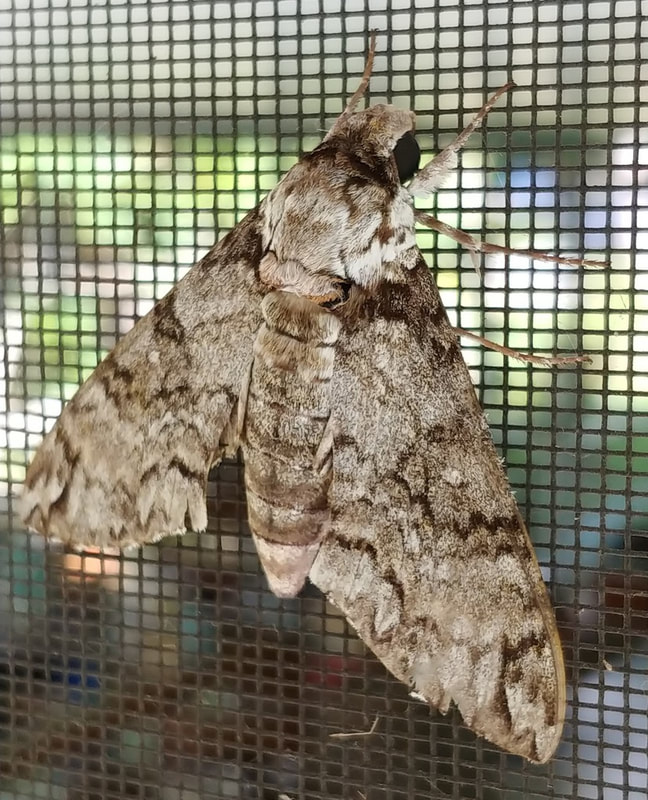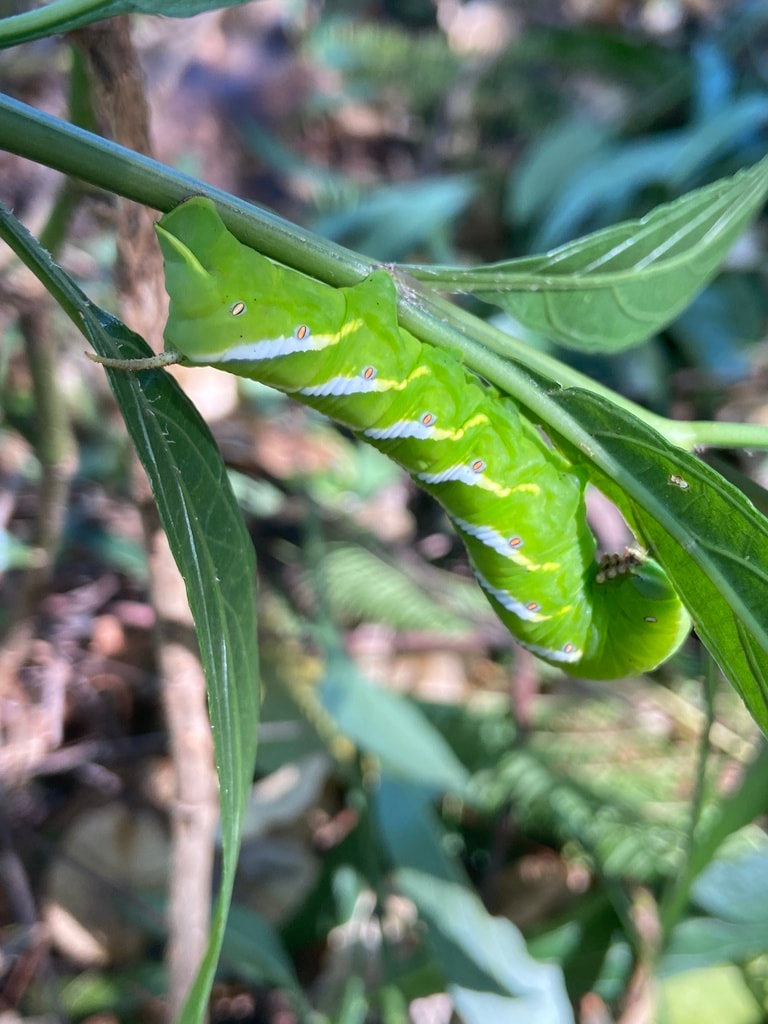|
Common Name: Brontes Sphinx; Cuban Sphinx
Ecology and Life History: This moth is active from April to September in Florida (2). This species is highly attracted to light with both males and females coming to artificial light. This species is not sexually dimorphic, though males tend to be smaller than females. Males often have a triangular abdomen ending in a point whereas females have a rounder abdomen ending in a blunt tip. Eggs are laid on the leaves and stems of hostplants. Young larvae likely feed on the undersides of leaves. This subspecies is smaller than the nominate species Manduca brontes brontes by about a third (2). The forewings of this subspecies are also much more variable and lack the same amount of white seen in M. brontes brontes (2). Habitat and Searching for Larvae: Larvae feed on Fraxinus (Ash), Tecoma stans (Yellow Elder), and Campsis radicans (Trumpet Vine). Larvae can be found virtually anywhere on the plant, younger instars may show preference to new growth. In Florida, this is a species of subtropical suburbs and other habited areas. Most records of this species come from Sanibel Island and Gulf Hammock (2). It undoubtedly flies in other habitats. Larvae are likely present from May through November. While it has not yet been shown, this species almost certainly fluoresces under UV light like other members of the genus. Rearing Notes: {COMING SOON} Host plants: Click here to load this Caspio Cloud Database
Cloud Database by Caspio |
Adult Description: This is a medium sized gray moth with lots of maculation on the forewings. The forewings are 38-43mm in length (2). The forewings are overall gray in color, with a scalloped black postmedial band. There is a white discal spot. The postmedial area has some brownish coloration. The submarginal area has some white coloration. The abdomen and thorax are gray and there are no spots on the abdomen.
Larval Description: L5: This is a striking larva. The base color is green-blue. There are seven white diagonal streaks above the spiracles on the abdominal segments. The last stripe is broader and leads to the slightly granulose blue horn. The dorsal region of this larva is bright green in color. The spiracles are pink and edged in black. |
The gallery to the left contains photos of Manduca brontes cubensis adults. If you have a photo that you would like to submit to us, please contact us.
The gallery to the right contains photos of Manduca brontes cubensis larval and pupal stages. If you have a photo that you would like to submit to us, please contact us.
The gallery to the right contains photos of Manduca brontes cubensis larval and pupal stages. If you have a photo that you would like to submit to us, please contact us.





